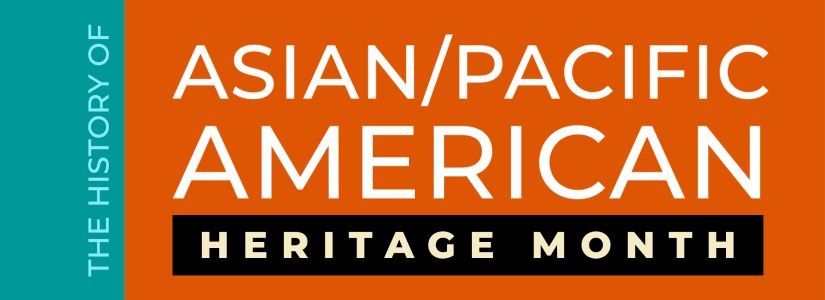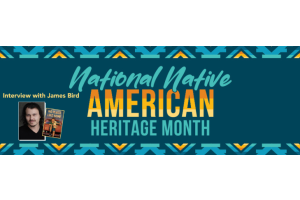Looking Back: The History of Asian/Pacific American Heritage Month



Unlike many other heritage celebration months, Asian/Pacific American Heritage Month has a relatively short and recent history. The month-long celebration we know today started in the early 1990s, but the legal celebration of Asian and Pacific American heritage, contributions, and achievements actually began in the 1970s after the persistence and passion of one woman: Jeanie Jew.
The Bicentennial and Celebrating America’s Diversity
Starting in the 1940s, the largest civil rights movement of the 20th century swept through America. By the 1970s, however, much of the momentum behind that movement ceased. Laws were passed mandating equality in matters such as voting, housing, and spatial rights. Months and weeks were soon after dedicated to ethnic groups – for example, Hispanic Heritage Week celebrations began in 1968 and Black History Month was officially recognized by the president in 1976. For the most part, Americans felt proud they had ended decades of legal and social discrimination and prejudice (or so they believed).
In fact, throughout the year 1976, when many Americans were celebrating the 200th anniversary of the US Declaration of Independence, displays and admiration for America’s diversity and history were at the forefront. Museums were opened, like an historic Union Station railway museum in Ogden, UT and an historic one-room schoolhouse moved onto Bowling Green State University’s campus to house a living history museum. New organizations were even funded, like the Afro-American Bicentennial Corporation, which received federal grants from the National Park Service to research and designate black history landmarks (view some of their publications here). With an estimated 90% of US citizens participating in bicentennial celebrations and commemorations, 1976 became a year for Americans to contemplate the history they would make and celebrate in the coming centuries.
A Brief History of Anti-Asian Sentiment in America
Yet some Americans, like Capitol Hill staffer Jeanie Jew, realized that not everyone was represented at these bicentennial celebrations of diversity. The great-granddaughter of a Chinese American immigrant, Jeanie felt the lack of recognition was personal. She, like others, pointed out the key role Asian and Pacific Island immigrants played in American history despite legal, social, and cultural discrimination that lasted well into the 20th century.
Throughout much of the 19th century and before, Chinese immigrants came to the US for a new life in the new land. Many took jobs laying track for various railroads stretching across the country. Additionally, US legislation openly and unapologetically targeted these immigrants with bills like The Chinese Exclusion Act of 1882, which placed a ban on Chinese labor immigration in the US. A decade later, this legislation was renewed, rewritten, and renamed the Geary Act. This new legislation not only severely limited (arguably banned) Chinese immigration, it also required all Chinese immigrants to carry permits and paperwork at all times to prevent immediate deportation. Unfortunately, this law remained in effect until 1943, when Congress repealed the Geary Act and replaced it with a slightly less exclusionary version which allowed a mere 105 Chinese immigrants into the US each year.
Discrimination, persecution, and exclusion did not stop with the law, either. Chinese men were lynched in what is now known as the Chinese Massacre of 1871. Extremists burned and destroyed San Jose Chinatown in 1887, killing many, including Jeanie’s great-grandfather. From 1942-1945, Japanese Americans were forced into concentration camps and stripped of their citizenship, homes, families, and possessions. During the Cold War Era (which saw active warfare in Korea and Vietnam), anti-Asian sentiments soared to all-time highs, sometimes turning violent. The 1982 murder of Vincent Chin, a Chinese engineering draftsman, by two men who blamed the Japanese for the decline of the American car industry garnered international media attention. After the tragic events of 9/11, the US saw an increase in anti-Arab, anti-Muslim, and anti-Indian sentiments. And most recently, there has been a significant increase in anti-Asian hate crimes in the wake of the COVID-19 pandemic, sparking national protests and a greater mainstream recognition of the hardships faced by the Asian and Pacific American communities.
The Making of a Celebratory Month
Asian and Pacific Americans faced discrimination at every turn, and in 1976, Jeanie Jew saw how unappreciated and misunderstood their contributions and history were. In the wake of several other celebratory weeks and months being designated for other groups of Americans, she felt it was the perfect time to lawfully commemorate and illuminate Asian/Pacific American heritages and histories. With the help of his Chief of Staff, Ruby Moy, Jeanie reached out to Congressman Frank Horton in the mid-1970s to share her family history and her idea.
“... It was a time of anti-Chinese and anti-Asian sentiment,” Congressman Horton said two decades later. “The revelations about [her great-grandfather] and the story of Asian Americans led this one woman to believe that not only should Asians understand their own heritage, but that all Americans must know about the contributions and histories of the Asian/Pacific American experience in the United States.” Soon after Jeanie approached Congressman Horton, he and representative Norman Mineta introduced H. J. Res. 1007 on June 19, 1978. This bill asked the president to recognize the week beginning May 4, 1979 as Asian/Pacific American Heritage Week (May was selected for two reasons: first, to coincide with the arrival of the first documented Japanese American immigrant, and second, to coincide with the completion of the transcontinental railroad in May 1843).
It passed on July 10, 1978 and was quickly signed by the president. However, the bill did not require annual celebrations, making May 1979 the first and only federally-mandated Asian/Pacific American Heritage Week. For nearly two decades afterwards, community organizations and advocates were forced to submit annual requests to have the bill reauthorized, and each year it was thankfully granted. Then, in 1990, a new bill was introduced designating the entire month of May as Asian/Pacific American Heritage Month, which was also quickly passed and signed into law. But again, this bill did not signify an annual designation, and once again advocates and organizations were forced to submit annual requests for reauthorization.
Finally, in 1992, Congressman Horton and several other colleagues introduced Public Law 102-450. This legislation, which passed unanimously, permanently designated May as Asian/Pacific American Heritage Month. Today, we commemorate the contributions, achievements, history, and heritage of Asian and Pacific Americans, all thanks to the persistence and passion of Mrs. Jeanie Jew.
Commemorating Asian/Pacific American Heritage and history is so important. One way to celebrate and learn is through the medium of reading. Scroll below for a list of past, present, and future JLG selections our editors recommend for every library highlighting Asian/Pacific American voices, authors, histories, characters, and heritages.
________________________________________
Sources:
The Inclusive Historian’s Handbook. “U.S. Bicentennial, 1976.” Updated July 2019.
History.com. “Civil Rights Movement.” Updated May 2021.
Library of Congress. “Asian/Pacific American Heritage Month.” Updated December 2020.
Time. “How One Woman's Story Led to the Creation of Asian Pacific American Heritage Month.” Updated May 2019.
Asian Pacific American Heritage Month. “About Asian/Pacific American Heritage Month.”
National Archives. “Records of the American Revolution Bicentennial Administration [ARBA].” Updates August 2016.






